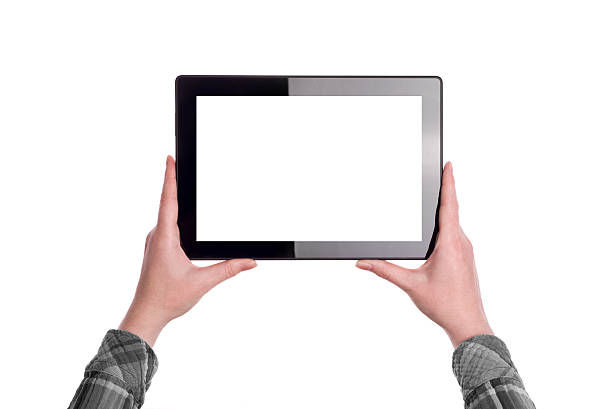The Ultimate E-Reader Comparison.
- The Moolah Team
- Jul 4, 2023
- 8 min read
In this blog post, we will compare and review different e-readers, including their screen size, storage capacity, battery life, and price, to help readers find the perfect device for reading e-books.
I. Introduction
E-readers have revolutionized the way we read books, making it easier and more convenient than ever to access and enjoy our favourite titles. With so many different e-reader devices on the market, each with its own unique features and benefits, it can be difficult to know where to start when looking for the perfect one.
In this blog post, we'll provide an in-depth comparison of some of the most popular e-readers on the market today, including their screen size, storage capacity, battery life, and price. Whether you're a casual reader or a bookworm, this guide will help you find the e-reader that best fits your needs and preferences.
First and foremost, let's discuss why e-readers have become such a popular choice for book lovers. One of the main reasons is their portability. E-readers are lightweight and compact, making them easy to carry around and read anywhere, whether you're on the go or snuggled up in bed. Unlike traditional books, which can be bulky and heavy, e-readers can hold thousands of books in a single device, allowing you to have an entire library at your fingertips.
Another advantage of e-readers is their screen technology. Most e-readers use electronic ink (e-ink) displays, which simulate the look and feel of traditional paper. This makes reading on an e-reader more comfortable and enjoyable for long periods of time, as it reduces eye strain and glare. Some e-readers even have built-in lighting, allowing you to read in low-light conditions without straining your eyes.
Of course, e-readers aren't without their downsides. One potential drawback is the lack of physicality. Many readers enjoy the tactile experience of holding a physical book and turning its pages. Additionally, some readers may find that e-readers don't offer the same level of immersion as physical books, as they lack the unique smells and textures that make reading such a sensory experience.
Despite these potential drawbacks, e-readers continue to gain popularity among book lovers of all ages. With their ease of use, portability, and wide range of features and benefits, e-readers are a great choice for anyone looking to dive into the world of digital reading.
In the next sections of this blog post, we'll explore some of the key features to look for when choosing an e-reader, including screen size, storage capacity, battery life, and price. By the end of this guide, you'll have a better understanding of what to look for when shopping for an e-reader, and be able to make an informed decision about which device is right for you. So, without further ado, let's get started!

II. Screen Size
When it comes to choosing an e-reader, one of the most important factors to consider is screen size. The size of the screen can affect how much text is displayed on the page, as well as how comfortable it is to read for extended periods of time.
Most e-readers on the market today have screen sizes ranging from around 6 inches to 10 inches. Smaller screens are generally more compact and portable, making them a great choice for readers on the go. However, they may not be as comfortable to read for extended periods of time, as the text can appear small and cramped.
On the other hand, larger screens offer more space for text and can be easier on the eyes, as the text is larger and more spread out. They're also a great choice for readers who prefer to read PDF documents or graphic novels, which may require a larger screen size to display properly.
When it comes to screen technology, most e-readers use electronic ink (e-ink) displays, which simulate the look and feel of traditional paper. This type of display is easy on the eyes and reduces glare, making it a popular choice among readers.
Some e-readers also offer additional features to enhance the reading experience, such as adjustable font sizes and the ability to change the screen's brightness and contrast. These features can be particularly useful for readers who have difficulty reading small text or who prefer a specific type of lighting.
Overall, when choosing an e-reader, it's important to consider your reading habits and preferences. If you're a frequent traveller or prefer to read on the go, a smaller screen may be a better choice for you. However, if you plan to read for extended periods of time or need to view larger documents, a larger screen may be a more comfortable option. Additionally, features such as adjustable font sizes and screen brightness can greatly enhance the reading experience, so it's important to look for a device that offers these features if they're important to you.

III. Storage Capacity
When it comes to e-readers, storage capacity is another important consideration. The amount of storage available can affect how many books and documents you can store on your device, as well as how often you'll need to delete items to make space for new ones.
Most e-readers on the market today offer storage capacities ranging from 4GB to 32GB. This may not sound like a lot, but it's important to remember that e-books and other documents tend to be relatively small in size, so even a device with a smaller storage capacity can hold a significant number of books.
However, if you plan to store a large number of books, audiobooks, or other files on your e-reader, it may be worth investing in a device with a larger storage capacity. This can also be useful if you plan to use your e-reader to store and view PDF documents or other larger files.
It's also worth noting that some e-readers offer additional storage options, such as the ability to expand storage using a microSD card. This can be a great option for users who want to store a large number of files on their device without having to constantly delete and replace them.
When considering storage capacity, it's also important to keep in mind the types of files you'll be storing. For example, audiobooks and graphic novels tend to take up more space than standard e-books, so if you plan to store a lot of these types of files, a larger storage capacity may be necessary.
Ultimately, the amount of storage you need will depend on your individual usage habits and preferences. If you only plan to store a few books at a time and regularly delete old files, a device with a smaller storage capacity may be sufficient. However, if you plan to store a large number of books or other files, or if you want the flexibility to store and view files without having to constantly delete and replace them, a device with a larger storage capacity or the option to expand storage may be the way to go.

IV. Battery Life
Battery life is another important factor to consider when choosing an e-reader. After all, there's nothing worse than settling in for a good read only to have your device die on you mid-chapter.
Most e-readers on the market today offer battery life ranging from a few weeks to several months, depending on usage. This can be influenced by a number of factors, including screen size, screen type, and whether or not the device has a backlight.
Devices with larger screens and backlights tend to have shorter battery life, as they require more power to operate. However, many e-readers offer features such as automatic brightness adjustment and power-saving modes to help extend battery life.
It's also worth noting that some e-readers have user-replaceable batteries, while others have batteries that are integrated into the device and cannot be easily replaced. This can be an important consideration for users who plan to keep their device for several years and want to ensure that they can continue to use it even as the battery begins to degrade.
When choosing an e-reader based on battery life, it's important to consider your individual usage habits. If you plan to use your e-reader frequently and for long periods of time, a device with longer battery life may be preferable. However, if you only plan to use your device occasionally or for short periods of time, battery life may be less of a concern.
Ultimately, the best way to maximize battery life is to use your device's power-saving features and to charge it regularly. By doing so, you can ensure that your e-reader is always ready for your next reading session, whether you're on a long flight or just settling in for a quiet evening at home.

V. Price
When it comes to e-readers, price can be a major deciding factor for many consumers. E-readers can range in price from less than $50 to several hundred dollars, depending on the brand, model, and features offered.
In general, the more expensive e-readers tend to offer more advanced features, such as larger screens, higher resolution displays, and more storage space. However, there are also many budget-friendly options available that still offer a great reading experience.
One important thing to keep in mind when considering price is that e-readers can be a worthwhile investment in the long run. While the upfront cost may be higher than buying a few paperbacks, e-readers can save you money in the long run by allowing you to purchase e-books at a lower cost than physical books. Additionally, many public libraries now offer e-book lending services, allowing you to borrow e-books for free using your e-reader.
Another thing to consider when thinking about price is the longevity of the device. While budget-friendly options may be more affordable upfront, they may not last as long as more expensive models. Investing in a higher-end e-reader may be a better long-term investment if you plan to use your device frequently and for many years.
Ultimately, the price of an e-reader will depend on your individual budget and preferences. It's important to consider the features that are most important to you and to shop around to find the best deal on a device that meets your needs.

VI. Conclusion
Choosing the perfect e-reader can be a daunting task, with so many options available on the market. By considering factors such as screen size, storage capacity, battery life, and price, you can narrow down your choices and find a device that meets your needs.
When it comes to screen size, it's important to consider what you'll primarily be using your e-reader for. If you'll be reading mostly text-heavy books, a smaller screen may suffice. However, if you plan to read graphic novels or magazines, a larger screen may be necessary.
Storage capacity is also an important consideration, especially if you plan to store a large number of e-books on your device. While many e-readers come with built-in storage, some also offer the option to expand storage using a memory card.
Battery life is another important factor to consider, especially if you plan to use your e-reader frequently. Look for devices with longer battery life or the ability to charge quickly.
Finally, price is a major consideration for many consumers. While budget-friendly options may be more affordable upfront, investing in a higher-end e-reader may be a better long-term investment.
In conclusion, there is no one-size-fits-all e-reader that will be perfect for everyone. The best e-reader for you will depend on your individual preferences and needs. By considering the factors outlined in this comparison guide, you can make an informed decision and find the perfect e-reader for your reading habits.
Thanks for taking the time to read our Ultimate E-Reader Comparison guide. We hope it has helped you in your search for the perfect e-reader. If you found this post informative and useful, be sure to subscribe to our newsletter for more content like this. Thanks for your support!
Best regards,
Moolah







Comments